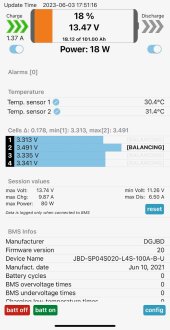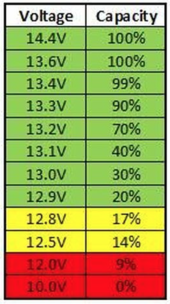I am a newbie and built a battery bank, 4X 3.2v 78ah Lifepo4 Lishen Prismatic with a JBD 4S 100A BMS. However, today, I noticed that it will take forever to charge my battery. The battery is charged at 1.3a, instead of 10a. btw, I am using NOCO GENIUS10, a 10A Smart Charger. Please see the screenshot here,
Any advice would be greatly appreciated. Thank you!

Any advice would be greatly appreciated. Thank you!




